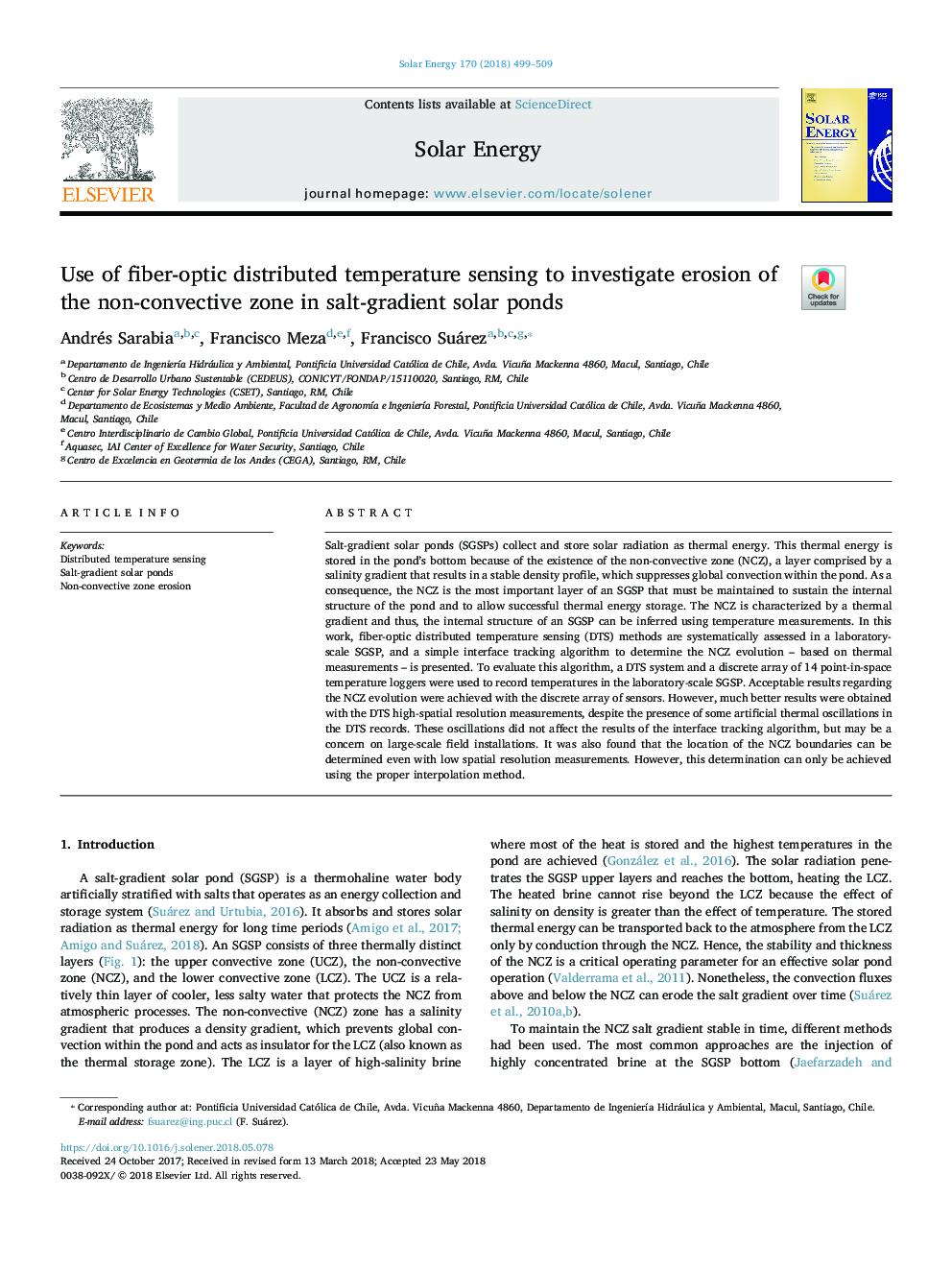| کد مقاله | کد نشریه | سال انتشار | مقاله انگلیسی | نسخه تمام متن |
|---|---|---|---|---|
| 7935084 | 1513048 | 2018 | 11 صفحه PDF | دانلود رایگان |
عنوان انگلیسی مقاله ISI
Use of fiber-optic distributed temperature sensing to investigate erosion of the non-convective zone in salt-gradient solar ponds
ترجمه فارسی عنوان
استفاده از سنجش درجه حرارت توزیع فیبر نوری برای بررسی فرسایش ناحیه غیر متخلخل در استخرهای خورشیدی نمکی
دانلود مقاله + سفارش ترجمه
دانلود مقاله ISI انگلیسی
رایگان برای ایرانیان
کلمات کلیدی
سنجش درجه حرارت توزیع شده، نمکی از استخرهای خورشیدی، فرسایش ناحیه غیر متخلخل،
موضوعات مرتبط
مهندسی و علوم پایه
مهندسی انرژی
انرژی های تجدید پذیر، توسعه پایدار و محیط زیست
چکیده انگلیسی
Salt-gradient solar ponds (SGSPs) collect and store solar radiation as thermal energy. This thermal energy is stored in the pond's bottom because of the existence of the non-convective zone (NCZ), a layer comprised by a salinity gradient that results in a stable density profile, which suppresses global convection within the pond. As a consequence, the NCZ is the most important layer of an SGSP that must be maintained to sustain the internal structure of the pond and to allow successful thermal energy storage. The NCZ is characterized by a thermal gradient and thus, the internal structure of an SGSP can be inferred using temperature measurements. In this work, fiber-optic distributed temperature sensing (DTS) methods are systematically assessed in a laboratory-scale SGSP, and a simple interface tracking algorithm to determine the NCZ evolution - based on thermal measurements - is presented. To evaluate this algorithm, a DTS system and a discrete array of 14 point-in-space temperature loggers were used to record temperatures in the laboratory-scale SGSP. Acceptable results regarding the NCZ evolution were achieved with the discrete array of sensors. However, much better results were obtained with the DTS high-spatial resolution measurements, despite the presence of some artificial thermal oscillations in the DTS records. These oscillations did not affect the results of the interface tracking algorithm, but may be a concern on large-scale field installations. It was also found that the location of the NCZ boundaries can be determined even with low spatial resolution measurements. However, this determination can only be achieved using the proper interpolation method.
ناشر
Database: Elsevier - ScienceDirect (ساینس دایرکت)
Journal: Solar Energy - Volume 170, August 2018, Pages 499-509
Journal: Solar Energy - Volume 170, August 2018, Pages 499-509
نویسندگان
Andrés Sarabia, Francisco Meza, Francisco Suárez,
